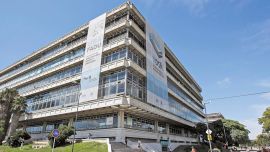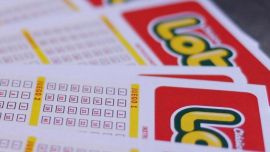Argentina will again introduce a temporary exchange rate for soybean exports in an elaborate attempt to shore up dwindling Central Bank reserves and ease economic damage from a historic drought.
From April 8 to May 31, soybean exporters will be able to ship their products abroad at 300 pesos to the dollar, Economy Minister Sergio Massa announced on Wednesday.
The government expects the measure to generate US$9 billion in exports of soybeans and other agricultural products. It is the third version of the special exchange rate for soybeans, but the first that includes other products.
"There are more than 69,000 producers in Argentina with losses" that are in some cases irreparable, Massa said. The measure helps to "incentivise exports and strengthen reserves," added the minister.
The measure is another branch to Massa's complex economic strategy that seeks to cushion the effects of a looming recession as Argentina's worst drought on record has wreaked havoc on crop exports, which are essential to the country's growth. Economists are forecasting a contraction of three percent of GDP this year, with inflation exceeding 100 per cent.
One of the main priorities of the policy is to bolster the Central Bank's dwindling net reserves, which stood at US$2.7 billion at the end of March, according to estimates by Argentine consultancy firm FMyA. In Argentina, exporters must sell the dollars they receive from their foreign sales to the Central Bank in exchange for pesos.
In theory, a higher exchange rate would encourage exports. But some economists warn that dollar purchases from soybeans will force the Central Bank to print more pesos, putting more pressure on inflation.
The temporary exchange rate of 300 to the dollar is far higher than the current official exchange rate of 211 to the dollar, which the government controls through a web of currency controls and other policies. Still, it is much lower than the unofficial parallel 'blue dollar' rate of 409 pesos.
While soybean exporters can benefit from the measure until the end of May, other agricultural exporters, known locally as "regional economies," will be able to access the rate until the end of August. The local press dubbed the policy "dólar Malbec" or "dólar agro" because wine producers, among others, will benefit from a better rate and Massa trailed the measure for the first time at a vineyard.
related news
by Patrick Gillespie & Ignacio Olivera Doll, Bloomberg























Comments